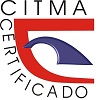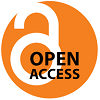Educational Strategy for sensory integration in students with deafblindness
Educational Strategy for sensory integration in students with deafblindness
Keywords:
sensory integration, students, deafblindness, educational strategyAbstract
Sensory integration is one of the affected areas in students with deafblindness, since they present a sensory disability whose deficiency causes communication, socialization, orientation and mobility problems and other developmental and learning needs, making it difficult for them to establish relationships, motor development, language, thinking and behaviors or adaptive responses important for total integration at the individual and social level in the world around them. This area, added to others, receive stimulation from educational attention that is aimed at reaching the same levels of independence that allow them to enjoy a better quality of life. For these reasons, this article aims to provide an educational strategy for sensory integration in students with deafblindness. Among the methods used, observation, documentary analysis, specialist consultation and interview with the teacher were used, whose essential results are seen in the difficulty that students present to give a correct respect to the different stimuli. Hence the importance of this educational strategy and its actions that led to a greater stimulation of the sensory systems and the appropriation of a more complete form of the information they receive from the environment.
Downloads
References
Álvarez, D. (2004). La sordoceguera. Un análisis multidisciplinar. Capítulo 3. Formato digital. ONCE. Madrid, España. Recuperado de http://riberdis.cedid.es/handle/11181/3407
Arroyo, J. (2023). El diseño de estrategias y tácticas en la planificación estratégica de la educación. Revista Educación. San José, Costa Rica. https://www.scielo.sa.cr/scielo.php?script=sci_arttext&pid=S2215-26442023000100706&lang=es
Chkout, T. (2003) Atención Educativa a niños y adolescentes sordociegos. Ciudad de la Habana, Cuba. Editorial Pueblo y Educación.
Cuevas Estenoz, L. M. (2018). Manual de orientaciones dirigido a los docentes sobre el desarrollo de la clase integradora para los escolares con sordoceguera. Horizonte Pedagógico, 7(3), 28–37. Recuperado a partir de http://www.horizontepedagogico.rimed.cu/index.php/hop/article/view/72
Dunn W. (1999). Sensory profile. User’s manual. San Antonio, TX: The Psychological Corporation. Recuperado de https://www.academia.edu/download/40414423/ManualdePerfilSensorial-1-doc.pdf
Fitó Duvergel, E. (2019). Educación laboral para adolescentes con sordoceguera: Labor education for adolescents with deafblindness. Horizonte Pedagógico, 8(3), 4–11. Recuperado a partir de http://www.horizontepedagogico.rimed.cu/index.php/hop/article/view/113
Montoya Restrepo, I. A. (2009). La formación de la estrategia en Mintzberg y las posibilidades de su aportación para el futuro. Revista Facultad De Ciencias Económicas, 17(2), 23–44. Recuperado a partir de https://revistas.unimilitar.edu.co/index.php/rfce/article/view/4438
Luis López, T. (2023). Cuentos apoyados en pictogramas para las clases integradoras de educandos con sordoceguera:. Horizonte Pedagógico, 12(1), 47–65. Recuperado a partir de http://www.horizontepedagogico.rimed.cu/index.php/hop/article/view/283
Paz, A. Charroó, L. Bermejo, S. Sevila, M. Leyva, E. (2021). Implantes cocleares: prioridad para niños con pérdida sensorial dual en Cuba. Revista Archivo Médico de Camagüey. Camagüey, Cuba. http://scielo.sld.cu/scielo.php?script=sci_arttext&pid=S1025-02552021000400003&lang=es
Pollato- de la Cruz, D., Segura- Rodríguez, I., & Galván- Romero, A. (2011). Las estrategias en la investigación educativa. Revista científica Especializada En Ciencias De La Cultura Física Y Del Deporte, 8(15). Recuperado a partir de https://deporvida.uho.edu.cu/index.php/deporvida/article/view/157
Vives, J. Ruiz, P. García, A. (2022). La integración sensorial y su importancia en el aprendizaje de los niños con trastorno de espectro autista. Revista Cadernos Brasileiros de Terapia Ocupacional. https://www.scielo.br/j/cadbto/a/SNtjRYJZLJ4Npp6D77rHRsq/?lang=es
Published
How to Cite
Issue
Section
License
Copyright (c) 2023 Yuselis Rodríguez Martínez , Milagros González Guzmán , Sulma Rosa Herrera Cuesta

This work is licensed under a Creative Commons Attribution 4.0 International License.
Horizonte Pedagógico es una revista Open Access, lo que quiere decir que todo su contenido es accesible libremente sin cargo para el lector o su institución. Los usuarios están autorizados a leer, descargar, copiar, distribuir, imprimir, buscar o enlazar a los textos completos de los artículos de esta revista sin permiso previo del editor o del autor, de acuerdo con la definición BOAI de open access. Los autores que publican en esta revista están de acuerdo con los siguientes términos: Los autores conservarán los “Derechos de autor” y garantizan a la revista el derecho de ser la primera publicación del trabajo. La revista se encuentra protegida bajo una licencia internacional de Creative Commons Attribution License Atribución 4.0 Internacional (CC BY NC 4.0), que permite a otros compartir (copiar y redistribuir el material en cualquier medio o formato) y adaptar (remezclar, transformar y construir a partir del material), para cualquier propósito, incluso comercialmente. Bajo las siguientes condiciones: atribución (usted debe dar crédito de manera adecuada, brindar un enlace a la licencia, e indicar si se han realizado cambios y no comercial — Usted no puede hacer uso del material con propósitos comerciales. Puede hacerlo en cualquier forma razonable, pero no de forma tal que sugiera que usted o su uso tienen el apoyo de la revista o el autor de la publicación.






















